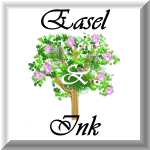27 May 2011
A forgotten Sunnah >> al Qisd al Hindi/Bahri

Fath al Baaree (Volume 12)
Al Haafidh Ibn Hajar Al 'Asqalaanee
Abu Bakr ibn al ‘Arabee stated:
‘Qist (Costus) is of two types: Hindee (Indian) - which is black, and Bahree which is white. Al Qist al Hindee is hotter than al Bahree.”
Ummu Qays bint Mihsan said: I heard the Messenger of Allaah - صلى الله عليه وسلم - say:
“It is upon you to use ‘Al ‘Uood al Hindee’ [i.e. Qist/Costus], for indeed it contains seven cures; it is inhaled through the nostrils to relive throat aches/tonsillitis and placed in the sides of the mouth for the relief of Dhaat al Janb [1]”[Collected by Bukhaaree and Muslim.]
In another narration that will be explained after two chapters:
“I approached the Prophet - صلى الله عليه وسلم - with a son of mine while pressing his tonsils due to tonsillitis, so he said: “You should use al Qist al Hindee.” [Collected by Bukharee and Muslim.]
Al Imaam Ahmad and the authors of the Sunnan collected a Hadeeth on the authority of Jaabir that the Messenger of Allaah - صلى الله عليه وسلم – said:
“If a child is inflicted with tonsillitis or a headache, then let his mother take al Qist al Hindee, scrub it with water and let him inhale it as droplets through his nostrils.”
In a Hadeeth narrated by Anas that will be explained after two chapters he said:
"The best thing to cure yourselves with is Hijaamah and al Qist al Bahree.”
It is understood from this Hadeeth that it is a cure for all pains, al Qist al Hindee is used when hot medicine is needed for treatment, and al Bahree was described as milder, because al Hindee is hotter than al Bahree as has already been explained.
His statement:
“For indeed it has seven cures...”
In this Hadeeth, only two types of cures were mentioned and not seven, so either the narrator sufficed himself with mentioning only two while all seven were mentioned by the Messenger, or the Messenger mentioned only two due to being the only two of the seven in existence at the time. The second possibility seems to be stronger as will be explained shortly.
Doctors have mentioned that from the benefits of al Qist are:
* It eases the menstrual flow.
* It eases the flow of urine.
* It kills worms in the bowels.
* It repels poison.
* It repels fever.
* It heats the stomach.
* It removes facial spots.
So more than seven cures were mentioned, some scholars explained that seven cures were known through revelation, and the rest through experience, so only seven were mentioned because of their certainty. Other scholars said that he only mentioned what was needed because he was not sent with the details of such issues.
I say [al Haafidh]:
There is a possibility that the ‘seven’ mentioned in the Hadeeth are seven methods which are the basis of how it is used as treatment; because it is either rubbed in, drank, Takmeed, Tandheel, breathed in as a smoke [incense], inhaled as liquid drops through the nostrils or placed at the sides of the mouth.
Rubbing it in is done by mixing it with oil and creams until it is smooth, likewise is Takmeed.
To drink it, it is crushed into a powder and mixed with honey, water or other liquids, likewise is Tanteel.
It is inhaled by mixing it with oil and putting droplets of it in the nostrils.
Inhaling it as smoke is clear.
With each method, there are different healing benefits, and such eloquence, coming from one who was given Jawaami al Kalim[2], should not be surprising.
______________
[1] An illness that causes the swelling of the sides. It is also described as an illness that produces vile gasses, and an illness between the heart and the kidney.
[2] The ability to speak a few words which have deep, wide ranging meanings.
taken from subulassalaam.com











0 comments:
Post a Comment